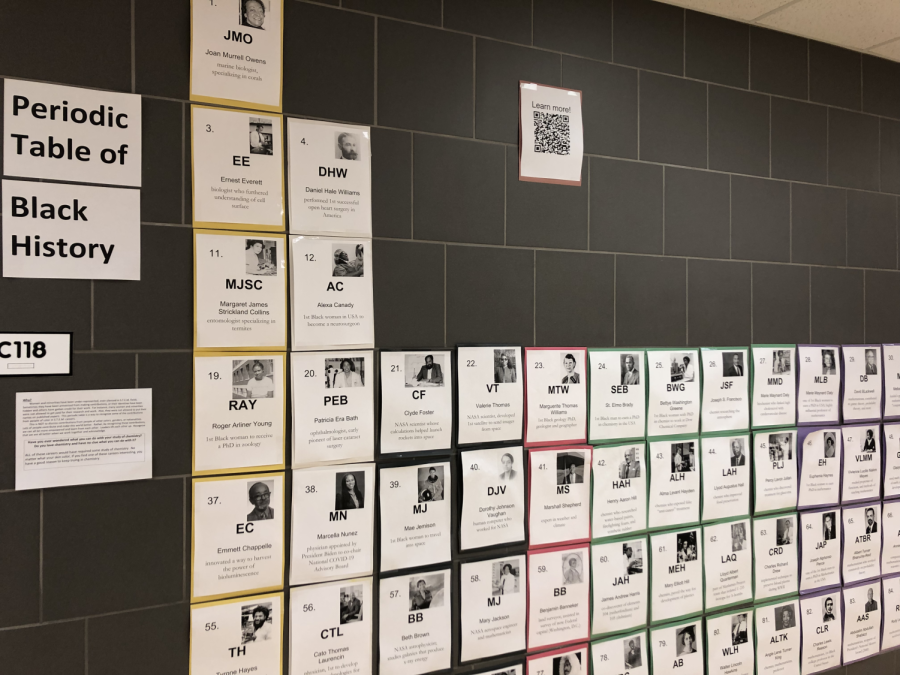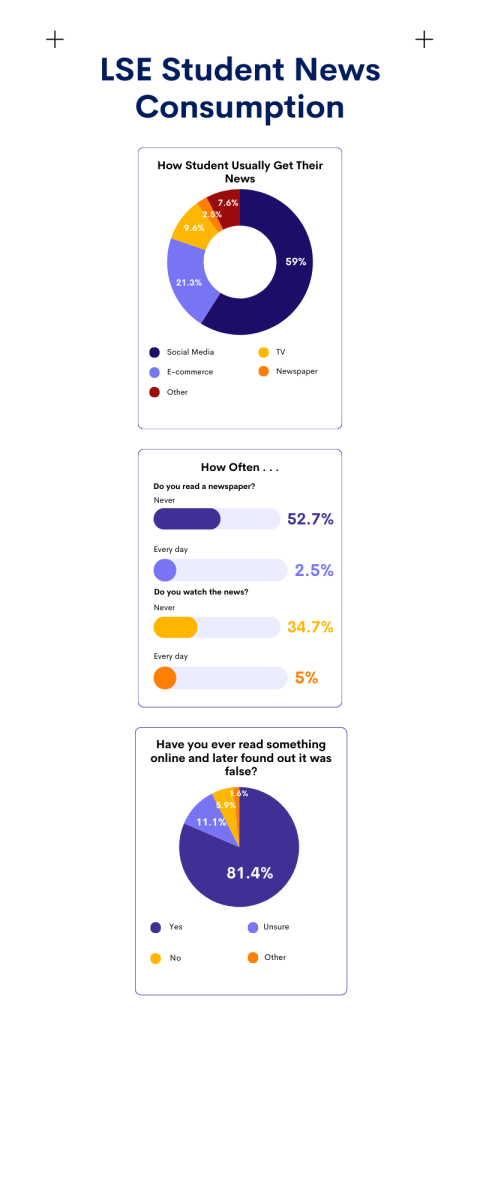Periodic Table Display in honor of Black History Month helps LSE students see themselves in STEM fields
The Periodic Table of Black History located in C-hall
February 18, 2022166 Views
On Feb. 7, chemistry teacher Frances Petersen, along with some of her students, put up a periodic table in C-hall to celebrate National Periodic Table Day and Black History Month. However, unlike an ordinary periodic table, this table showcases the achievements of women and minorities in science, technology, engineering and math (STEM) careers.
The periodic table displays 90 men and women and their achievements in STEM fields, and is divided into categories that pertain to their profession. If a sign has a gray outline it means that the person was in the medical field, a black outline is a sign that they were involved in NASA or astronomy, etc.
“Women and minorities have been under-represented, even silenced in STEM fields,” Petersen wrote in an email to LSE staff. “Sometimes they have been prevented from making contributions, or their identities have been hidden and others have gotten credit for their work. For instance, many women and minorities were not allowed to get paid for their research and work and/or not allowed to put their names on published papers. This Periodic Table of Black History is a way to recognize some of the contributions from people of color in STEM careers.”
Each “element” on the table includes a poster that briefly describes the significant accomplishment of each person. Every sign contains a picture of the person, their initials, first and last name, and finally, what they accomplished.
Petersen encourages all students and staff to stop outside room C118 to admire the Periodic Table of Black History.
“This is NOT to dismiss contributions from people of other colors, genders, or nationalities,” Petersen wrote. “Lots of people contribute and make this world better. Rather, by recognizing the contributions here, we can all be more empowered and learn from each other. Leaders lift each other up and recognize that we are all better when we work together.”














